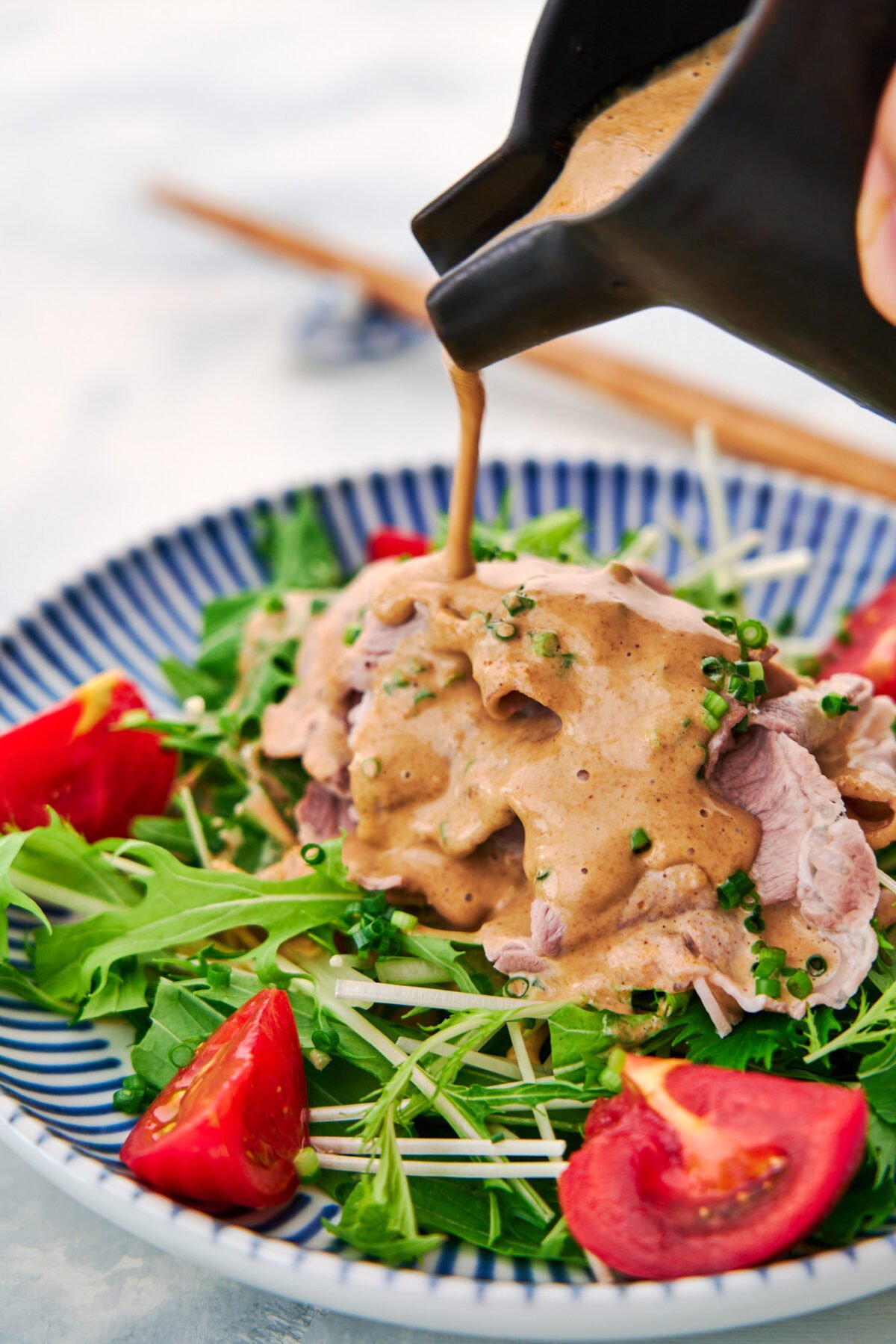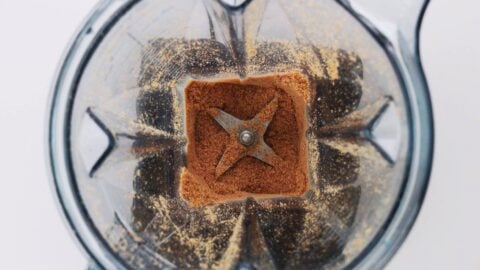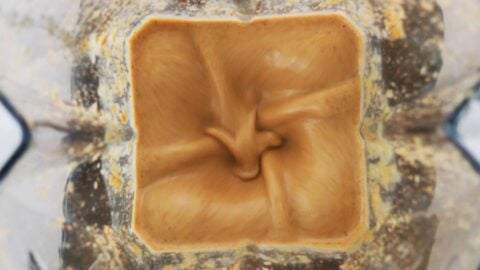
Goma Dare literally means "sesame sauce" in Japanese, and it's a condiment that's an integral part of the Japanese pantry. Although it's most commonly known as a dipping sauce for Shabu Shabu in the West, Goma Dare is used as a seasoning and dressing in Japan. It's also used as a dipping sauce for other foods such as noodles or sashimi.
It's not the same as the sesame wafu dressing often served at Japanese restaurants in the US, but it can easily be converted by adding a bit of vinegar and mayonnaise (I've included the recipe in the FAQs below).
Jump to:
Why This Recipe Works
- This Japanese sesame sauce recipe captures the full spectrum of sesame flavor by combing 3 forms (toasted sesame seeds, tahini, and toasted sesame oil).
- Grinding katsuobushi into a powder is a shortcut that avoids having to make dashi stock. That being said, if you already have dashi on hand, you skip the katsuobushi and use the dashi instead of water.
- The sauce is on the thick side, making it incredibly well suited for enrobing foods such as Shabu Shabu as you dip them into the sauce.
Ingredients for Japanese Sesame Sauce
- Tahini - Tahini is made by hulling and grinding the inner kernels of sesame seeds into a thick paste. It adds a rich creaminess and earthy minerality to the sauce. Asian-style sesame paste is made by grinding whole sesame seeds into a paste and works just as well as tahini, but I've chosen to use tahini in this recipe because it's generally easier to find outside of Japan.
- Toasted sesame seeds - I like grinding in some whole toasted sesame seeds because it lends additional texture to the sauce, and since we're using tahini, the toasted sesame adds the nutty flavor of the sesame hulls to the sauce as well.
- Sesame oil - For the final sesame component, I like adding some toasted sesame oil. It has an intensely savory and nutty aroma that neither whole sesame seeds nor tahini will have.
- Katsuobushi - Katsuobushi is dried, smoked, and fermented skipjack tuna that has been shaved into paper-thin flakes. It has a smoky aroma and umami-rich taste, and it's the primary ingredient in Japanese dashi stock. Usually, this sesame sauce is made by adding dashi, but I like grinding the katsuobushi into a powder with the sesame seeds as a shortcut. If you prefer using dashi, you can just omit this and substitute dashi in place of the water. Another option is to substitute dashi shoyu for the soy sauce in which case you can skip the katsuobushi.
- Soy sauce - Soy sauce is the primary seasoning for sesame sauce, and in addition to providing most of the salt, it also adds a ton of umami.
- Sugar - A small amount of sugar brings all the flavors together without making the sauce overtly sweet. You can add more if you like your sauce sweeter, but I don't recommend leaving it out.
- Salt - This sesame sauce is used to season other foods, so it needs to be salty pretty salty. Using just soy sauce makes it too dark in color, which is why I add a little salt. Depending on how you plan to use the sauce, you may need to add a little more salt, but you can always adjust this after making it, so this is a good baseline.
How to Make Japanese Sesame Sauce
The first thing you want to do is grind the sesame seeds and katsuobushi into a powder. You can do this in a blender or food processor, but a mortar and pestle will work as well.
Once you've ground up the sesame and katsuobushi, add the rest of the ingredients and blend until it's smooth and creamy. If you did the grinding in a mortar and pestle, you can transfer the mixture to a bowl and whisk in the other ingredients.
The sesame sauce should last at least two weeks kept in a clean sealed container or bottle in the fridge. It may last even longer, but I've never had it around that long.
Ways to Use Sesame Sauce
This delicious goma sauce can be used to liven up fish and tofu, make a vegetable side into a centerpiece, or as a Japanese sesame dressing for salads.




Tableware
The plates and bowls pictured in this post were sent over by Musubi Kiln. They have a fantastic selection of both classic and modern Japanese ceramics and tableware. Get 5% off your order by using coupon code "NORECIPES" at checkout.
Other Sesame Recipes
- Sesamella (Chocolate Sesame Spread)
- Tantanmen (Spicy Sesame Noodles)
- Spinach Goma Ae (Sesame Spinach)
FAQ
Japanese sesame sauce, which is known as Goma Dare(ごまだれ) in Japanese, is a condiment that's most often used as a dipping sauce for Shabu Shabu. A good one is made thick and creamy, thanks to the addition of tons of sesame seeds. In addition to its use as a Shabu Shabu sauce, Goma Dare can be used to dress steamed vegetables such as broccoli, cauliflower, and green beans. It can also be used as a dipping sauce for sashimi or cold noodles such as udon or soba.
Goma Dare is a four-syllable name that is pronounced as follows:
go like ghost
ma like mall
da like dot
re the “re” sound does not exist in the English language, and the best way to make it is to say the word "rain" with the tip of your tongue at the front of your mouth.
Most versions of this sauce contain dashi, which includes katsuobushi (smoked, dried and fermented skipjack tuna). If you want to make this Goma Dare plant-based you can omit the katsuobushi, and then use a plant-based dashi (such as konbu dashi or shiitake dashi) in place of the water.
This Japanese sesame sauce can easily be converted into Japanese-style sesame dressing by whisking in some mayonnaise and rice vinegar. For a lighter (yet still creamy) dressing, whisk in 1 tablespoon of rice vinegar for every ¼ cup of Goma Dare. For a more rich and creamy dressing (like the ones served at Japanese restaurants in the US), whisk in 1 tablespoon of Japanese mayonnaise in addition to the rice vinegar.
📖 Recipe


Units
Ingredients
- 30 grams toasted sesame seeds ~¼ cup
- 5 grams katsuobushi
- ½ cup tahini or Asian sesame paste
- ½ cup water
- ¼ cup soy sauce
- 1 tablespoon evaporated cane sugar
- 1 tablespoon toasted sesame oil
- ¼ teaspoon salt
Instructions
- Add the toasted sesame seeds and katsuobushi to a blender or food processor and blend until the mixture becomes powder.

- Add the tahini, water, soy sauce, sugar, sesame oil, and salt and blend until smooth.

- Store in a sealed container in the refrigerator until you are ready to use it. It should last at least 2 weeks.



Comments
No Comments